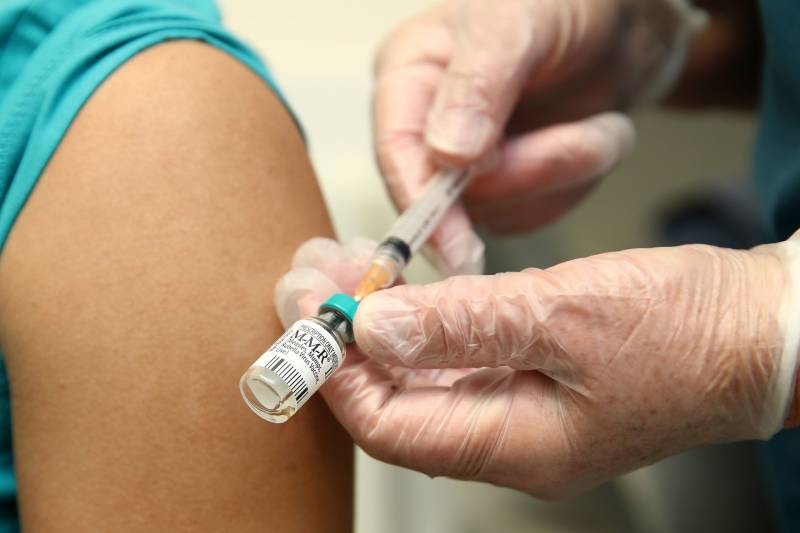The law requires every child taught in school classrooms or enrolled in a child care facility — with the exemption of students who receive medical exemptions from doctors — to be fully immunized against 10 communicable diseases: diphtheria, hepatitis B, haemophilus influenzae Type B, measles, mumps, pertussis (whooping cough), poliomyelitis, rubella, tetanus and varicella (chickenpox).
Researchers also compared California’s vaccination rates with those of other states that still have personal belief exemptions, factoring in demographic variations.
Vaccination rates went up across California, particularly in counties like Sonoma and Santa Cruz, where rates have lingered below the statewide average. the report found. Non-medical exemptions decreased statewide by 2.4%, while medical exemptions increased 0.4%.
“When we look at those high-risk counties, we see the largest increases in vaccine coverage. 10-plus percent jumps in those areas,” said UCSF public health researcher Dr. Nathan Lo.
These changes brought the vaccination rate to 95% in almost all California counties, enough to provide “herd” immunity, or rates high enough that a contagious disease is less likely to spread.
It also means that a significant number of parents who previously received non-medical exemptions ended up complying with the law.
“So that nudge is enough to push the majority of these children to get properly vaccinated,” Lo said, adding that other states and countries would be wise to follow California’s lead.

